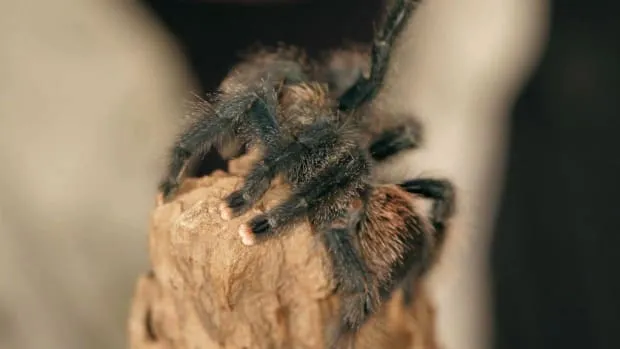Choosing the Right Tarantula Species
Before bringing a tarantula into your home, careful consideration should be given to the species you choose. Different tarantula species have varying care requirements, temperaments, and sizes. Some species are more docile and suitable for beginners, while others may be more defensive or require specialized environments. Researching various species, such as the Chilean Rose Hair, the Pinktoe Tarantula, or the Mexican Red Knee, can help you determine which one best aligns with your experience level and the resources you can provide. Consider the adult size of the tarantula, its expected lifespan, and any specific environmental needs it may have. Additionally, ensure that the species you select is legal to own in your area, as regulations can vary significantly. Proper research ensures a happy and healthy pet.
Considerations Before Getting a Tarantula
Owning a tarantula is a significant responsibility that requires careful thought and preparation. Before acquiring one, assess your lifestyle and ability to commit to its long-term care. Tarantulas can live for several years, with some species living for over 20 years. You must be prepared to provide consistent care throughout its lifespan. Evaluate your living situation to ensure you have the space and environment to accommodate a tarantula’s enclosure. Consider any potential allergies within your household and ensure everyone is comfortable with the presence of a spider. Budget for ongoing expenses like food, substrate, and potential veterinary care. Remember that tarantulas are not cuddly pets, and their care focuses on observation and providing a suitable habitat. Make sure you’re fully prepared for what it entails.
Tarantula Temperament and Suitability
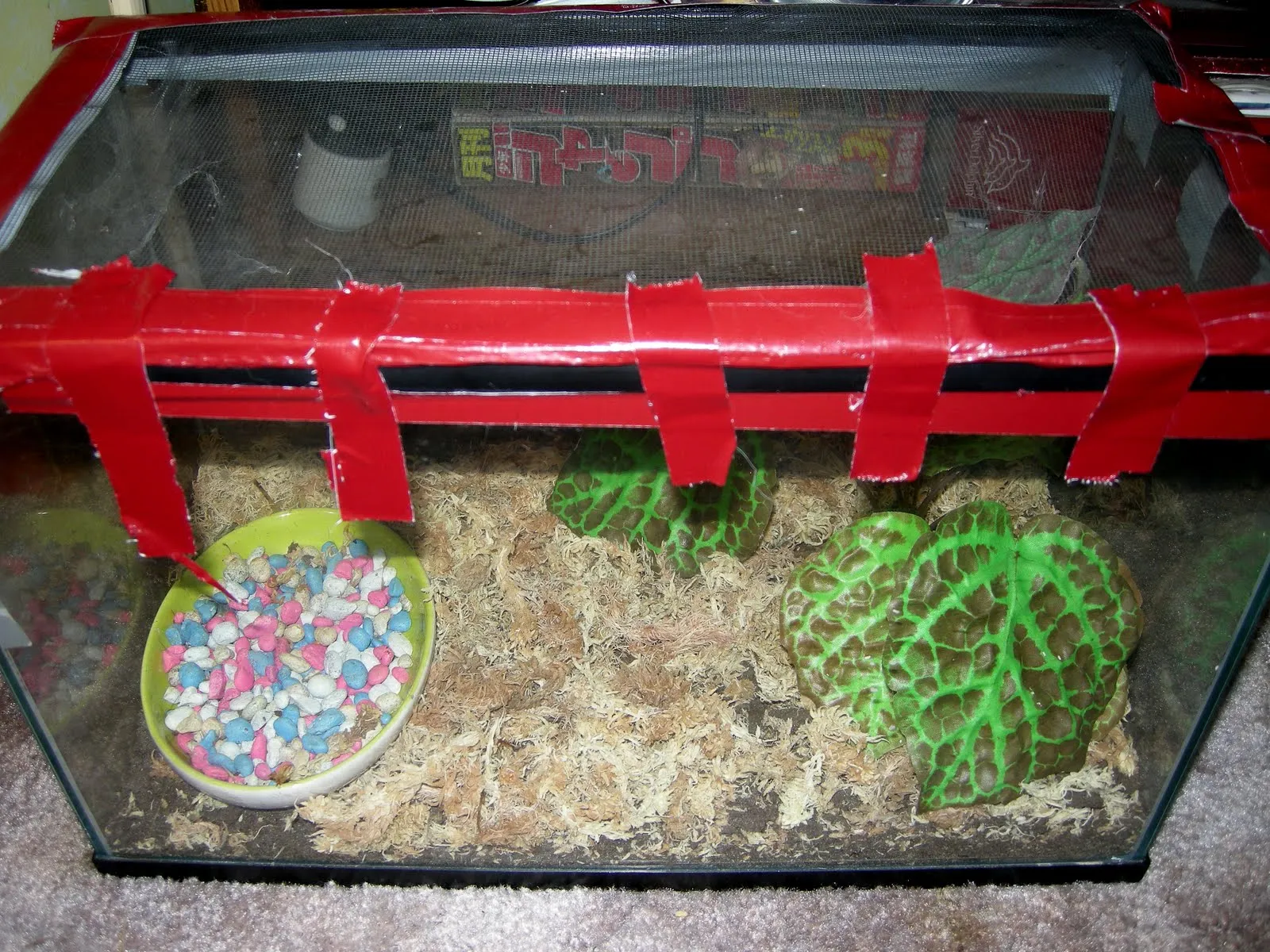
Understanding the temperament of your chosen tarantula species is crucial for responsible pet ownership. While tarantulas are generally not aggressive, their behavior can vary. Some species are known to be more docile, making them better choices for beginners, while others might be more skittish or prone to defensive behaviors. Research the specific characteristics of your selected species. This includes their tendencies towards biting, kicking urticating hairs (small, irritating hairs they use as a defense), or exhibiting other defensive postures. This understanding informs how you interact with your pet and minimizes the risk of unwanted interactions. It also helps you set realistic expectations. For instance, if you are uncomfortable with a spider that could potentially bite, you’ll want to ensure you choose a less defensive species.
Setting Up Your Tarantula’s Habitat
Creating a suitable habitat is vital for the well-being of your tarantula. A proper setup replicates the spider’s natural environment, providing essential elements for its health and happiness. The enclosure should be escape-proof, with appropriate ventilation and access points for feeding and maintenance. Consider the size and species when selecting your habitat because various types of tarantulas prefer varying levels of humidity and temperature. Be sure to establish a suitable substrate, hiding places, and a source of fresh water. The goal is to create an environment that minimizes stress. A well-designed habitat also enhances your enjoyment of observing your pet. Regular maintenance, including spot cleaning and substrate changes, is essential to maintain a healthy and thriving environment.
Enclosure Size and Type
The size and type of enclosure you choose directly impact your tarantula’s well-being. The enclosure should be large enough to accommodate the tarantula’s size and allow for comfortable movement, but not excessively large, which can make it difficult for the spider to find food or feel secure. For terrestrial species, a wider enclosure is generally preferred, while arboreal species benefit from a taller setup to facilitate climbing. Ensure the enclosure material is durable, transparent, and offers good ventilation. Glass or acrylic terrariums are popular choices, providing clear viewing and ease of cleaning. The lid must be secure and escape-proof, with small ventilation holes to ensure proper airflow and avoid the buildup of condensation. Choose an enclosure with features that make it convenient to feed, water, and maintain your tarantula’s habitat.
Substrate Selection
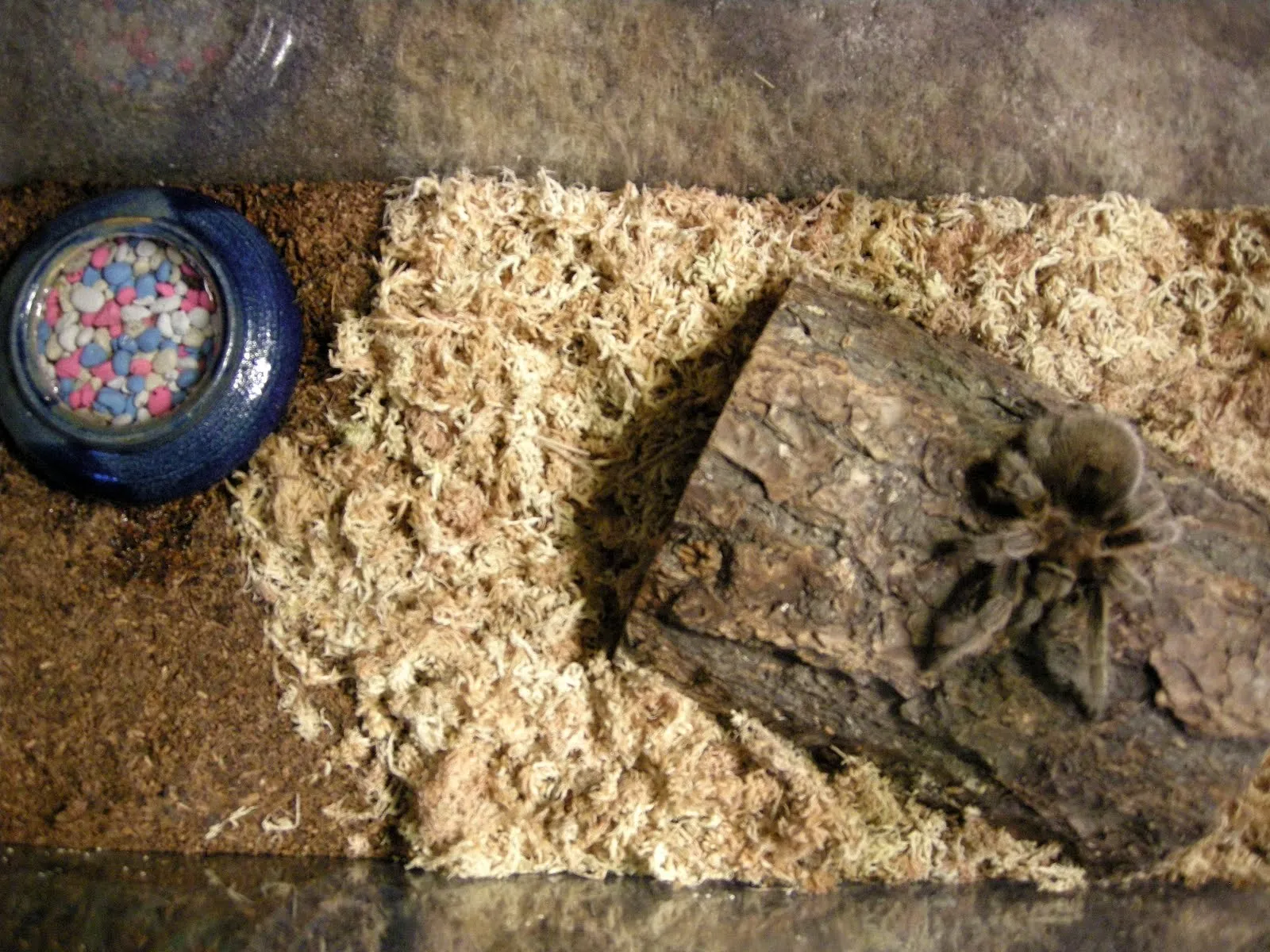
The substrate serves as the flooring of your tarantula’s enclosure. It is essential for providing a natural environment, maintaining humidity, and allowing the spider to burrow or hide. The ideal substrate depends on your tarantula’s species and its natural habitat. Common choices include coconut fiber (coco coir), peat moss, vermiculite, and a mix of these materials. Coco coir is a widely favored option because of its excellent moisture-retention properties, non-toxicity, and natural appearance. The depth of the substrate should be adequate to allow burrowing species to create tunnels. For arboreal species, the substrate may be shallower, with more emphasis on providing vertical climbing structures. Regularly monitor the substrate for cleanliness and replace it as needed to maintain a healthy and sanitary environment.
Temperature and Humidity Control
Maintaining the correct temperature and humidity levels is crucial for your tarantula’s health. The ideal temperature range varies depending on the species, so research your specific tarantula’s requirements. Generally, most species thrive in temperatures between 75-85°F (24-29°C). Use a thermometer to monitor the enclosure’s temperature and adjust the heating accordingly. In some cases, a heat lamp or heat mat may be needed. Humidity levels also play a crucial role. Most tarantulas prefer humidity levels between 60-80%, although this can vary. You can monitor humidity with a hygrometer. Increase humidity by misting the enclosure with dechlorinated water or providing a shallow water dish. Ensure proper ventilation to prevent excessive humidity, which can lead to mold growth. Regular monitoring and adjustments will create a comfortable environment for your spider.
Providing Hiding Places
Tarantulas are naturally secretive creatures that require hiding places to feel secure and reduce stress. Provide your tarantula with a shelter it can retreat to when feeling vulnerable. This can be achieved through various methods such as a hollow log, cork bark, half-buried terracotta pots, or commercially available hides. The size and type of hide should match your tarantula’s size and preferences. Ensure the hide is placed in a secure location within the enclosure and does not easily tip over. Additionally, incorporate other elements that provide visual barriers, such as live or artificial plants, to create a more natural and enriching environment. These elements will provide your tarantula with a sense of security, promoting its overall well-being and encouraging it to exhibit its natural behaviors.
Feeding Your Tarantula
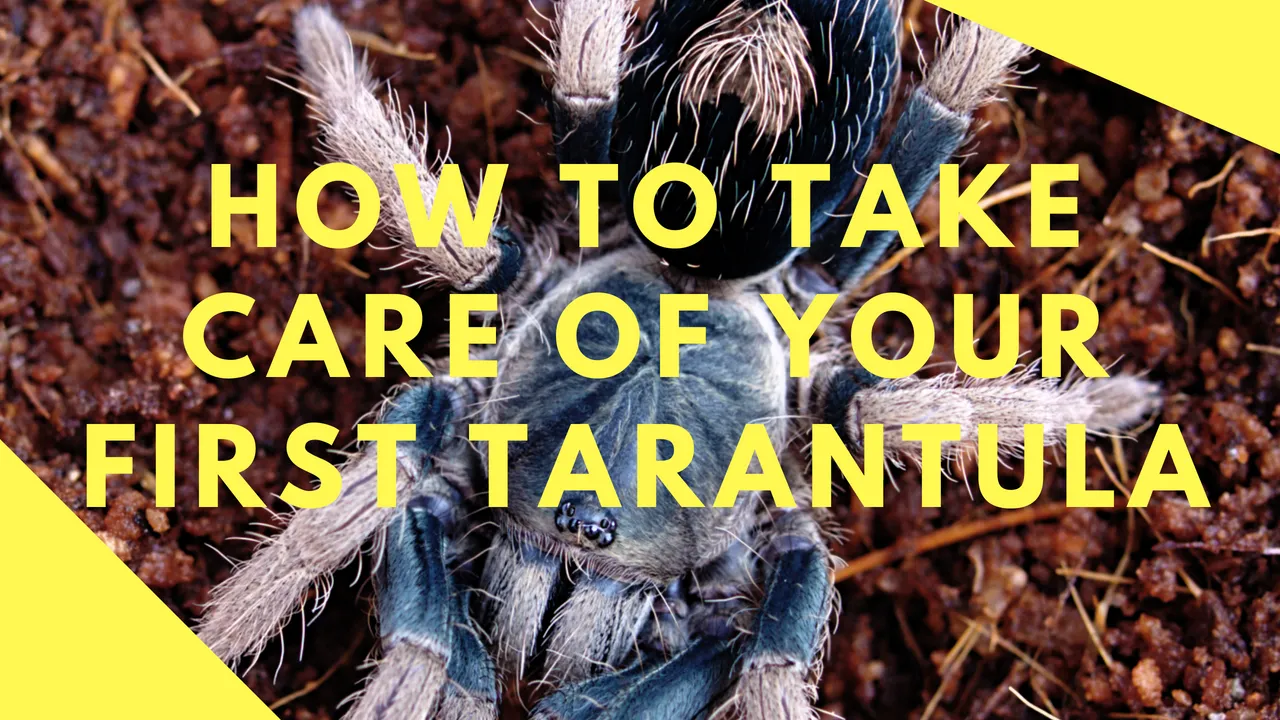
Proper feeding is essential for your tarantula’s health and longevity. Provide a diet of appropriate food items, ensuring that they are of the right size and nutritional value. The type and frequency of feeding depend on the tarantula’s species, age, and growth stage. Monitor your tarantula’s feeding habits and adjust the diet as necessary. Always remove any uneaten food items to maintain a clean environment. Feeding a tarantula is a straightforward process, but it needs to be done responsibly to maintain your pet’s health.
What to Feed Your Tarantula
The ideal diet for a tarantula primarily consists of live insects. Crickets, mealworms, roaches, and other readily available insects are common options. The size of the prey should be appropriate for the tarantula’s size; a general rule is to offer prey that is no larger than the tarantula’s body. It’s also beneficial to vary the diet to provide a range of nutrients. Before feeding, the insects should be gut-loaded with nutritious food. Avoid feeding wild-caught insects, as they may carry parasites or pesticides that could harm your tarantula. Ensure the prey is pesticide-free and from a reliable source. Supplementing your tarantula’s diet with occasional treats like pre-killed small vertebrates can also provide nutritional diversity, but these should be offered infrequently. Always remove uneaten prey within 24 hours to prevent stress and maintain cleanliness within the enclosure.
Feeding Frequency
The frequency of feeding depends on your tarantula’s age and growth stage. Spiderlings and juvenile tarantulas, which are still growing rapidly, generally need to be fed more often, usually every 3-7 days. Adult tarantulas, having reached their full size, can be fed less frequently, typically every 1-2 weeks. Observe your tarantula’s feeding behavior. If it consistently refuses food, it could be a sign that it is preparing to molt. Do not overfeed your tarantula. Overfeeding can lead to obesity, which can be detrimental to its health. Adjust the feeding schedule according to the species and individual needs. Some species have slower metabolisms. Monitor the tarantula’s abdomen size, and adjust accordingly.
Watering Your Tarantula
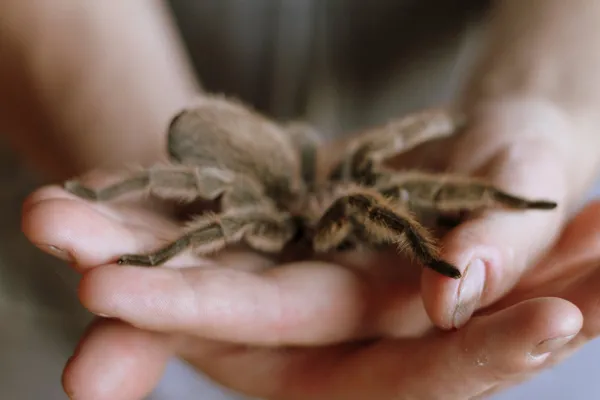
Providing fresh water is essential for your tarantula’s survival. While they obtain some moisture from their food, access to clean water is critical for hydration. The primary method of providing water is a shallow water dish. Ensure the dish is placed in a location that is easily accessible and does not pose a drowning hazard. The size of the water dish should be appropriate for the tarantula’s size; it should be shallow enough to prevent the spider from falling in and getting stuck. Regularly clean and refill the water dish with fresh, dechlorinated water to avoid contamination. You can also mist the enclosure with water periodically, especially during molting periods, but avoid over-misting, which can lead to excessive humidity and mold growth.
Handling Your Tarantula
Tarantulas are best admired from a distance, and handling should be kept to a minimum. Handling can stress the tarantula, potentially leading to defensive behaviors such as biting or the release of urticating hairs. If handling is necessary, it should be done with caution and awareness of the spider’s temperament. It is important to approach handling with respect and consideration for the well-being of your pet. Recognize that each spider has a unique personality. Be patient and understanding. Always prioritize the safety of both the tarantula and yourself.
When to Handle Your Tarantula
Generally, it is best to avoid handling your tarantula unless it is absolutely necessary, such as for health checks or relocation. Regular handling is not required for the spider’s well-being and can potentially lead to stress and injury. If you must handle your tarantula, do so when it is calm and not agitated. Avoid handling it during the molting process or shortly after a molt, as the tarantula’s exoskeleton is soft and vulnerable. Observe the spider’s behavior and body language; if it appears stressed or defensive, it is best to leave it alone. If you do handle the spider, keep the interaction brief and gentle. Wash your hands thoroughly before and after handling to prevent the transfer of any substances.
Proper Handling Techniques
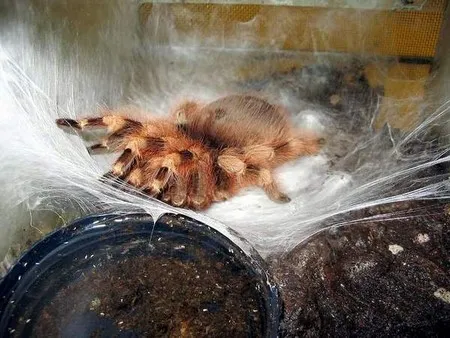
If you must handle your tarantula, use proper handling techniques to ensure the safety of both the spider and yourself. Gently coax the tarantula onto your hand or allow it to walk onto your open palm. Avoid grasping or squeezing the spider. Keep your movements slow and deliberate. Hold your hand close to a soft surface, like a table or the floor, in case the spider falls. Be aware that some tarantulas may kick off urticating hairs when feeling threatened. Therefore, avoid putting your face close to the spider. Always wash your hands thoroughly after handling the tarantula to remove any potential irritants. Proper handling requires patience and respect for the animal’s boundaries.
Tarantula Health and Common Issues
Like all pets, tarantulas can experience health issues. Familiarize yourself with common health problems and how to address them. Early detection and prompt intervention are essential for ensuring your tarantula’s well-being. Regular observation of your pet and knowledge of the signs of illness can make all the difference. Be prepared to seek veterinary care from a specialist in exotic pets, if needed. Creating a safe and healthy environment and understanding the signs of illness are key to a long and happy life for your tarantula. This includes attention to diet, habitat conditions, and recognizing any behavioral changes.
Recognizing Signs of Illness
Regularly observe your tarantula for any signs of illness. Common indicators include loss of appetite, lethargy, unusual posture, or difficulty moving. Other signs include swelling of the abdomen, discoloration, or the presence of mites or other parasites. If your tarantula is refusing food for an extended period or showing any concerning behavior, it may be ill. Another sign can be a lack of activity. This could mean your spider is preparing to molt or could indicate a serious health problem. Seek advice from an experienced tarantula keeper or a veterinarian specializing in exotic animals. Early detection and treatment can significantly improve the chances of a positive outcome. Being proactive in observing your pet can address any potential problems early on.
Moulting Process
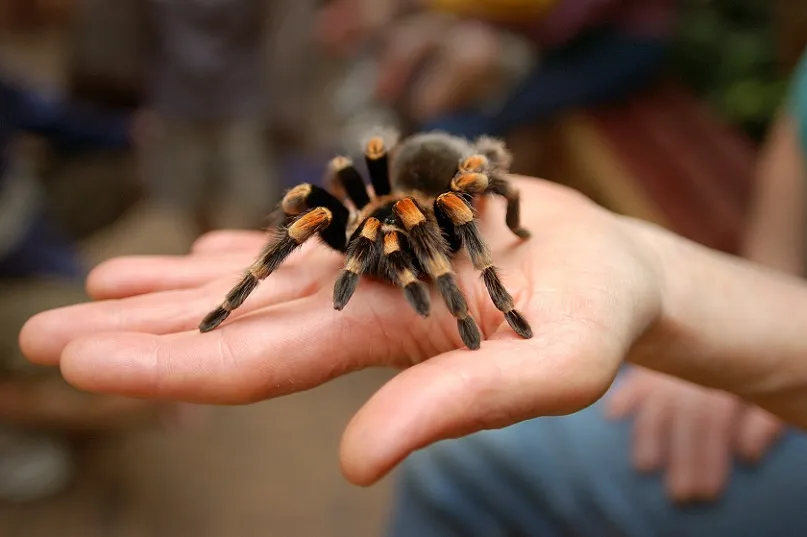
Moulting, or shedding the exoskeleton, is a natural process essential for tarantula growth. The frequency of moulting varies with age; younger tarantulas moult more often. Before moulting, your tarantula may become less active, stop eating, and develop a darkened abdomen. It may also create a web mat. The actual moulting process can take several hours, during which the tarantula lies on its back, shedding its old exoskeleton. Do not disturb or handle the tarantula during this vulnerable time. Provide adequate humidity and avoid feeding until the new exoskeleton has hardened. Once the tarantula has completed moulting, it will be more colorful. It may take a few days for the new exoskeleton to fully harden. After the molt, the tarantula may be hungry. Be patient, and allow the natural process to unfold without interference.
Dealing with Parasites
Tarantulas can occasionally be afflicted by parasites, such as mites. Mites can be visible as tiny, moving specks, often found around the mouthparts, joints, or abdomen. Infestations can cause significant stress to the tarantula and may require treatment. If you suspect your tarantula has mites, quarantine the affected spider and seek advice from an experienced keeper or a veterinarian specializing in exotic animals. Treatment options may include removing the infested substrate and thoroughly cleaning the enclosure. You may also need to treat the tarantula directly with a safe, recommended product. Prevention is critical. Always quarantine new tarantulas before introducing them to your collection. Be vigilant in checking the substrate for any signs of parasites. Maintaining a clean environment minimizes the risk of infestation.
Tarantula Care Maintenance and Cleaning
Regular maintenance and cleaning are crucial for the health and well-being of your tarantula and its habitat. Proper maintenance involves a combination of spot cleaning, substrate changes, and equipment upkeep. Following a consistent schedule will help maintain a clean, healthy, and aesthetically pleasing environment. Proper maintenance practices will enhance the longevity of your pet.
Regular Cleaning Schedule
Establish a regular cleaning schedule to maintain a healthy habitat. Spot cleaning should be performed at least once a week to remove uneaten food, feces, and other debris. Complete substrate changes are typically needed every few months, depending on the species and the substrate type. In addition, clean the water bowl and any decorative items regularly. Clean the enclosure’s glass or acrylic surfaces to maintain clear visibility. Always use appropriate cleaning products. Avoid harsh chemicals that could be harmful to your tarantula. A clean and well-maintained enclosure minimizes the risk of bacterial and fungal growth. A consistent cleaning schedule promotes a healthy environment for your pet.
Replacing Substrate
The frequency of substrate replacement depends on the type of substrate used and the size of the enclosure. As a general guideline, replace the substrate every 2-6 months, or sooner if it becomes excessively soiled or moldy. When replacing the substrate, gently remove the tarantula from the enclosure and place it in a temporary container. Dispose of the old substrate and thoroughly clean and disinfect the enclosure. Ensure the enclosure is completely dry before adding new substrate. Avoid using strong-smelling disinfectants. Be sure that you choose a substrate that is appropriate for the species. Use caution when handling the tarantula and provide fresh water.
Water Bowl Maintenance
Maintaining a clean water source is essential for your tarantula’s health. The water bowl should be cleaned and refilled with fresh, dechlorinated water at least once a week. Remove any debris, such as substrate or insect parts, that may have accumulated in the bowl. Use a mild soap and thoroughly rinse the bowl to eliminate any potential contaminants. Be sure that the water dish is placed in a stable location in the enclosure. Check the water level regularly and refill as needed to ensure a constant supply of fresh water. Adequate water will keep your tarantula hydrated.
Enrichment for Your Tarantula
While tarantulas are not as interactive as some pets, providing environmental enrichment can enhance their quality of life. Enrichment involves providing elements within the enclosure to stimulate the tarantula’s natural behaviors and reduce stress. Consider adding a variety of climbing structures, such as cork bark or branches, for arboreal species. Provide hiding places, like artificial plants or caves, to create a sense of security. You can also change the layout of the enclosure. It is important to observe your tarantula’s behavior and adjust the enrichment accordingly. Enrichment will enhance your pet’s life.
